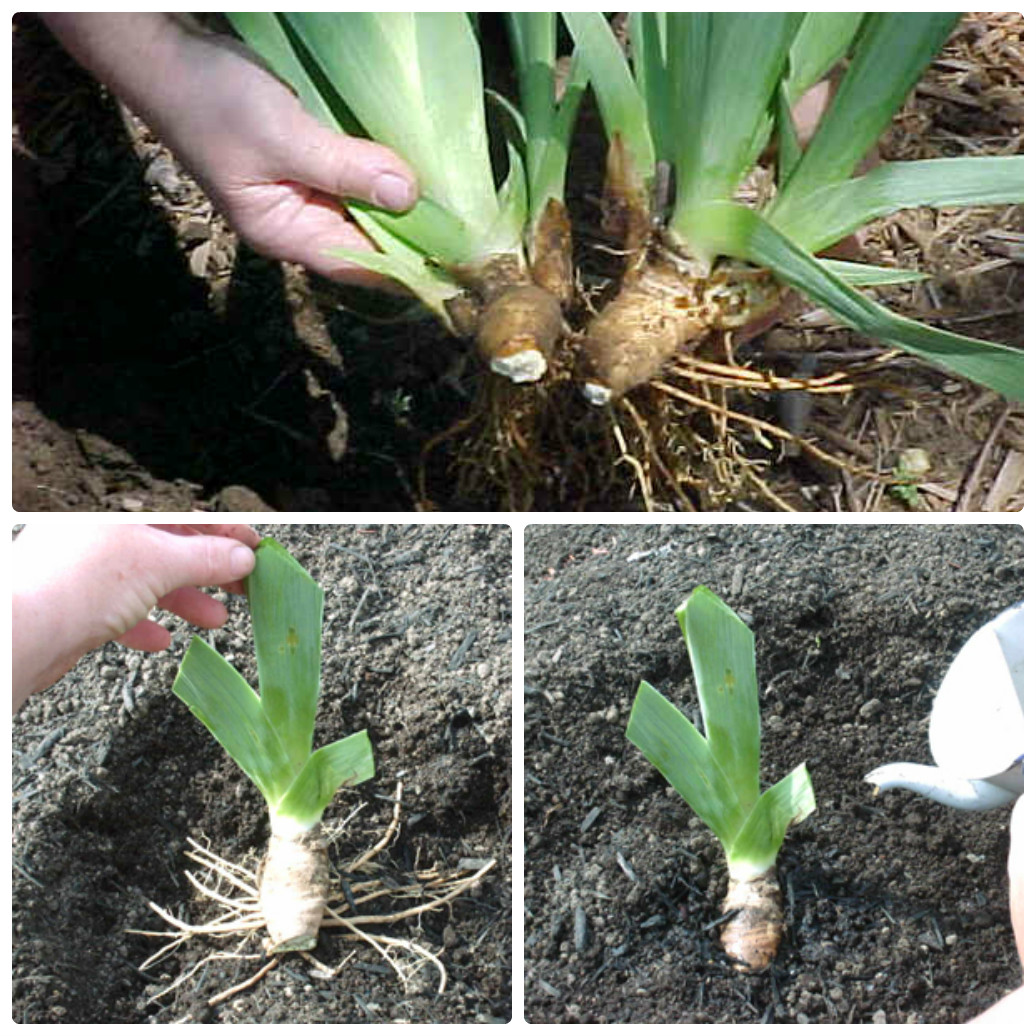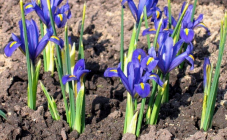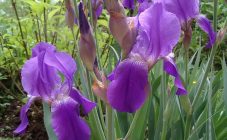Content:
Iris flowers can be wonderful to decorate any garden or plot - they are easy to care for and painted in different colors. However, after the irises have faded, what to do with them next?
When and how long do irises bloom
Other names for this perennial, popular with gardeners, belonging to the Iris family, are Iris or cockerel. There are more than 7 hundred varieties of irises of different shapes and colors. The flowering time for all species of cockerels begins in mid-May, and ends when July ends. Each individual plant can bloom with two to three flowers for 1-5 days, in general, the flower bed blooms for 2-3 weeks. Planting irises of different varieties can help prolong flowering time, incl. early flowering and late flowering.
Post-flowering care rules
The answer to the question of what to do with irises after they have bloomed is not so difficult. Outdoor iris care after flowering resembles that of other flowering perennials. It is necessary to manually weed out the weeds that have appeared on the flower bed. At the same time, it is strictly not recommended to use a garden tool, since the distance between the roots of the cockerels and the soil surface is very small. To keep the irises intact after flowering, what else to do?
The basic rules to help competently care for iris are as follows:
- it is necessary to manually loosen the soil in the flower bed;
- any pests must be eliminated to prevent disease;
- making feed mixtures at the right time and in the right dosage;
- sufficient soil moisture;
- planting and transplanting irises in the summer after flowering, taking into account all agrotechnical requirements.
After the individual perennial has finished blooming, experts recommend ridding the plant of obsolete peduncles. Thus, the faded color is cut off throughout the entire flowering period of the flower bed. It is necessary to periodically check them and clean them of dried flowers. This procedure allows you to prevent self-propagation of irises and make their flowering longer.
As soon as autumn ends, and the first frosts come, more than half of the foliage should be cut off, and all damaged leaves should be removed.
Processing should be carried out with a clean, sharp cutting tool (scissors or pruning shears). Not only the dried peduncle is removed, but also its still juicy receptacle with ovules.
In the last days of summer, when flowering is complete, the final pruning is carried out, this time not only the iris flower itself is removed, but also the stem on which it grew. Cutting off is performed a couple of centimeters above the root zone of the plant. Here you can't handle it with your hands, since the stalks of the cockerels are strong and fleshy, you need a pruner. The stems are removed to avoid further decay, and they also make excellent compost.
Care
Division of irises after flowering
To maintain a lush and beautiful color every year, irises must be transplanted, that is, divided into parts for vegetative propagation. This manipulation makes it possible to have flowers next season.
The most optimal time to divide irises is two weeks after the end of flowering, it is very important to adhere to it. By this time, perennials have accumulated enough nutrients, and the root system is already quite developed and has acquired new sprouts, but the buds with flowers have not yet developed.
Shoots suitable for splitting must be at least three centimeters high and two centimeters in diameter. A young iris bush is removed from the soil, the soil is shaken off, and the rhizomes are separated, consisting of separate parts with jumpers. On the separated roots, there should be at least one and no more than 3 links, and a growth bud or several leaves must also remain.
The plant ready for transplanting should not have any damage, rotten or dried parts. During the procedure, the roots are cut by one third (up to 0.1 m), and each leaf by two thirds. The minimum size of the resulting divisions is a part of an "adult" root and a bunch of leaves.
Then you can move the new flower to another area, raised one and a half dozen centimeters and receiving enough sunlight. Before planting the cuttings, the flower bed must be fertilized with mineral or organic fertilizers.
Preparing irises for winter
When autumn passes and winter is approaching, you should take special care of irises, by which time the flowering will end completely. First of all, it is necessary to nourish the root system of perennials, prepare it for the winter period, no later than a couple of weeks before the first frost. The top layer of the soil is fertilized, strictly after it dries up. It is best to use potassium-phosphorus (one-to-one ratio) mineral dressings at a dosage of 1 tbsp. spoon (about 15 grams) for one iris bush.
Simultaneously with the application of fertilizer, the flower bed is loosened a couple of centimeters deep. To prevent damage to the superficial roots of the cockerels, loosen it by hand.
Preparing faded irises for winter includes sheltering the bushes, since a fully open flower will not survive the cold.
As a rule, for these purposes they use:
- peat mixtures (10 cm layer);
- sawdust;
- coniferous spruce branches;
- dry foliage.
The entire shelter will need to be carefully removed in the spring.
Since irises can suffer from plant diseases, fungal and parasitic lesions, infectious and viral diseases, after the flowering period, it is imperative to take preventive measures to help protect flowers from these scourges. Some of them are feeding with mixtures of potassium and phosphorus and preventing the accumulation of moisture, which irises do not really need after flowering.
Tips & Tricks
If you want the dacha to indulge in beautiful blooming irises next spring, you need to listen to the advice and tricks of experienced florists for caring for them:
- if the foliage of the irises has turned yellow, without waiting for the cold weather, it is worth cutting it off earlier;
- sometimes you can make a semicircular pruning on the foliage to decorate the flower bed, while the roots will continue to accumulate nutrients;
- if a lot of snow is expected in winter, it will be the best shelter for wintering plants;
- when planting in divisions, their upper half should be well illuminated by the sun's rays;
- growth stimulants for killer whales are not needed;
- foliage and stems collected after pruning should be burned away from the site due to the fact that insects like to hatch their caterpillars in them.
Many gardeners love irises for their uniqueness and variety of shades.Unfortunately, they do not bloom for long, but after the completion of the ejection of flowers, they can be admired for a long time.
So, the irises have faded, what to do with them next? Everything is not so difficult: pruning, feeding, moisturizing. If you follow simple agronomic rules, you can enjoy the colorful iris flower bed for several spring and summer seasons in a row.














